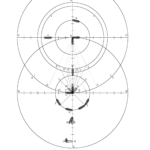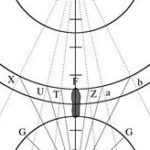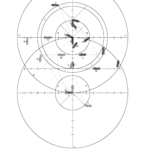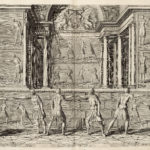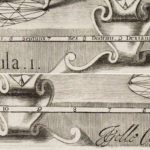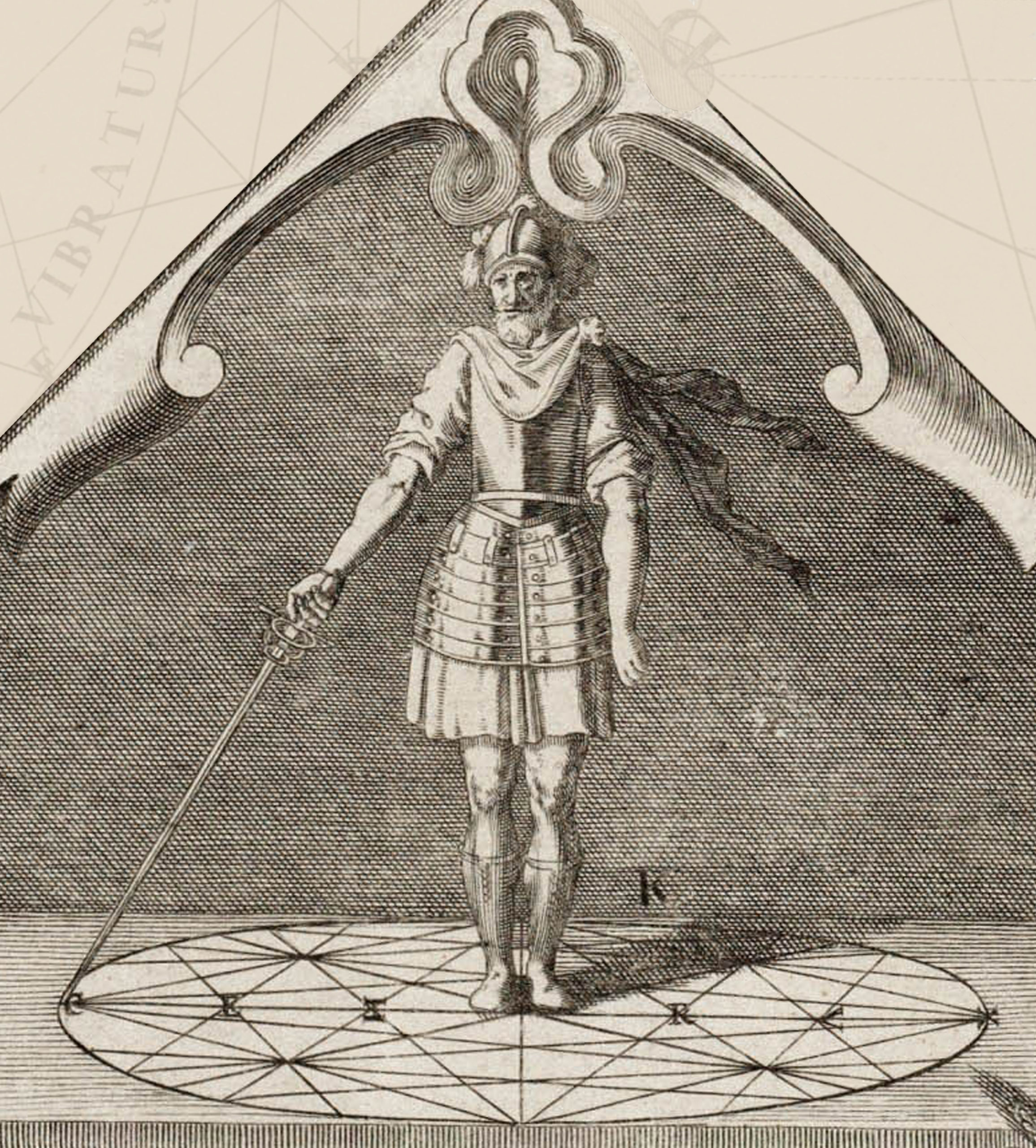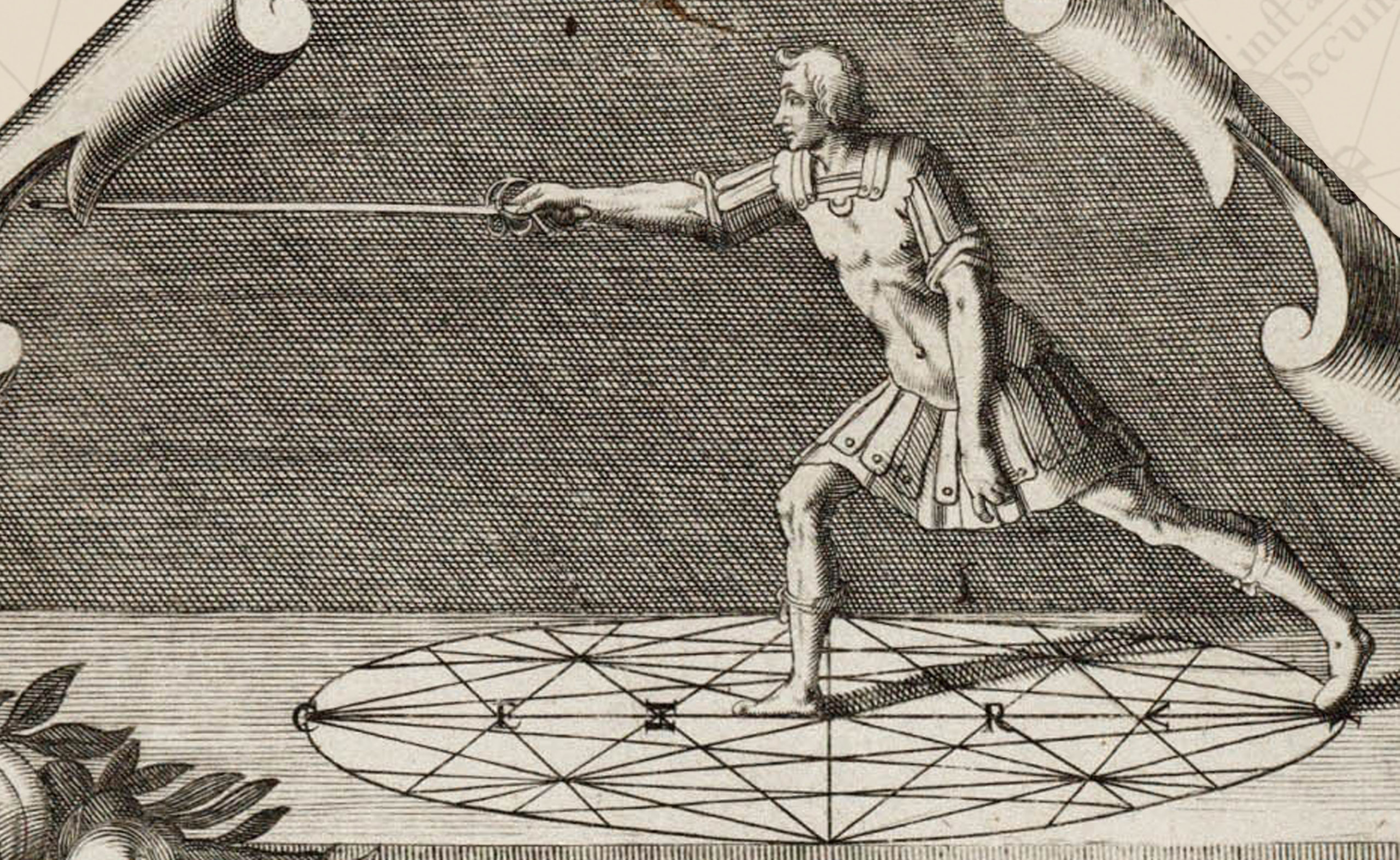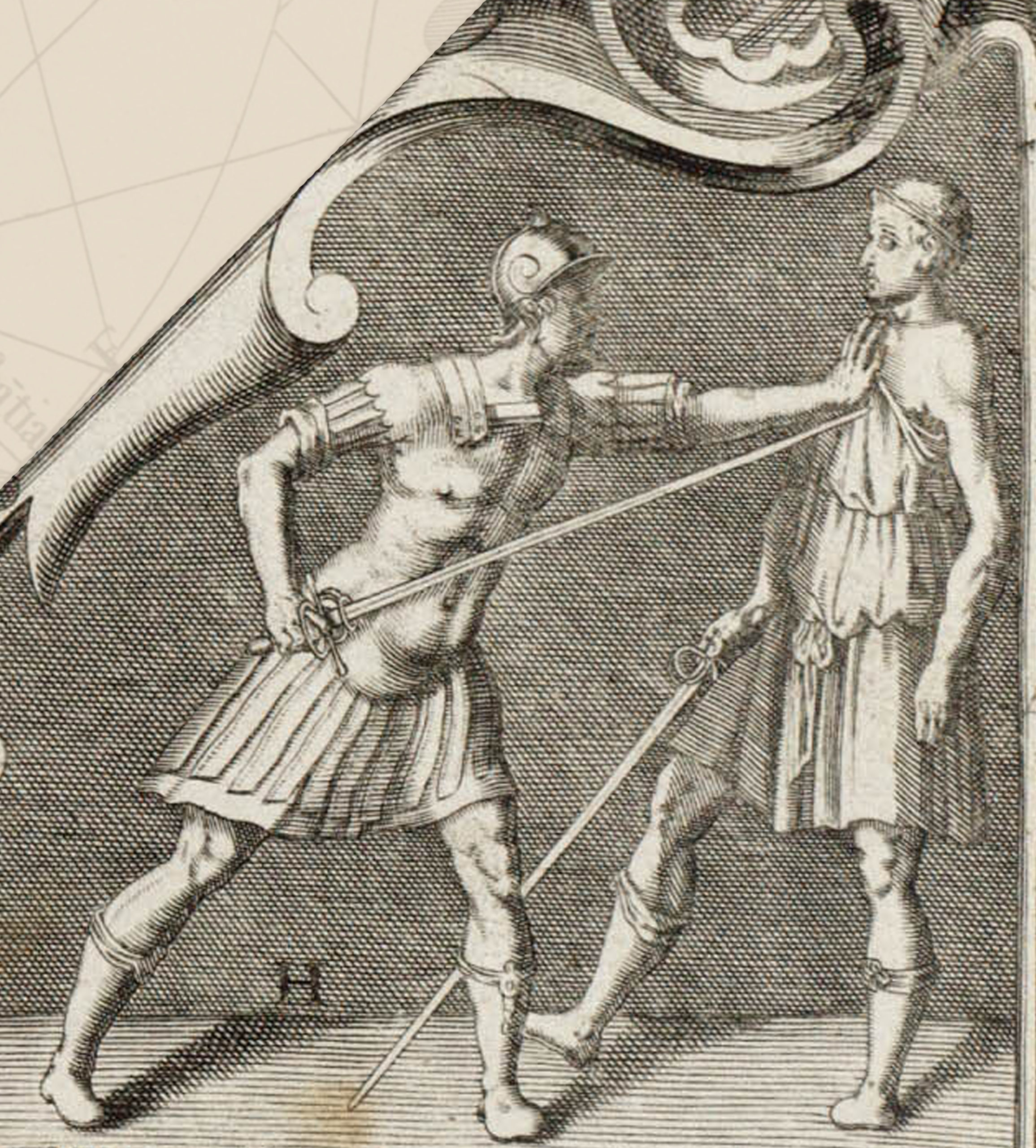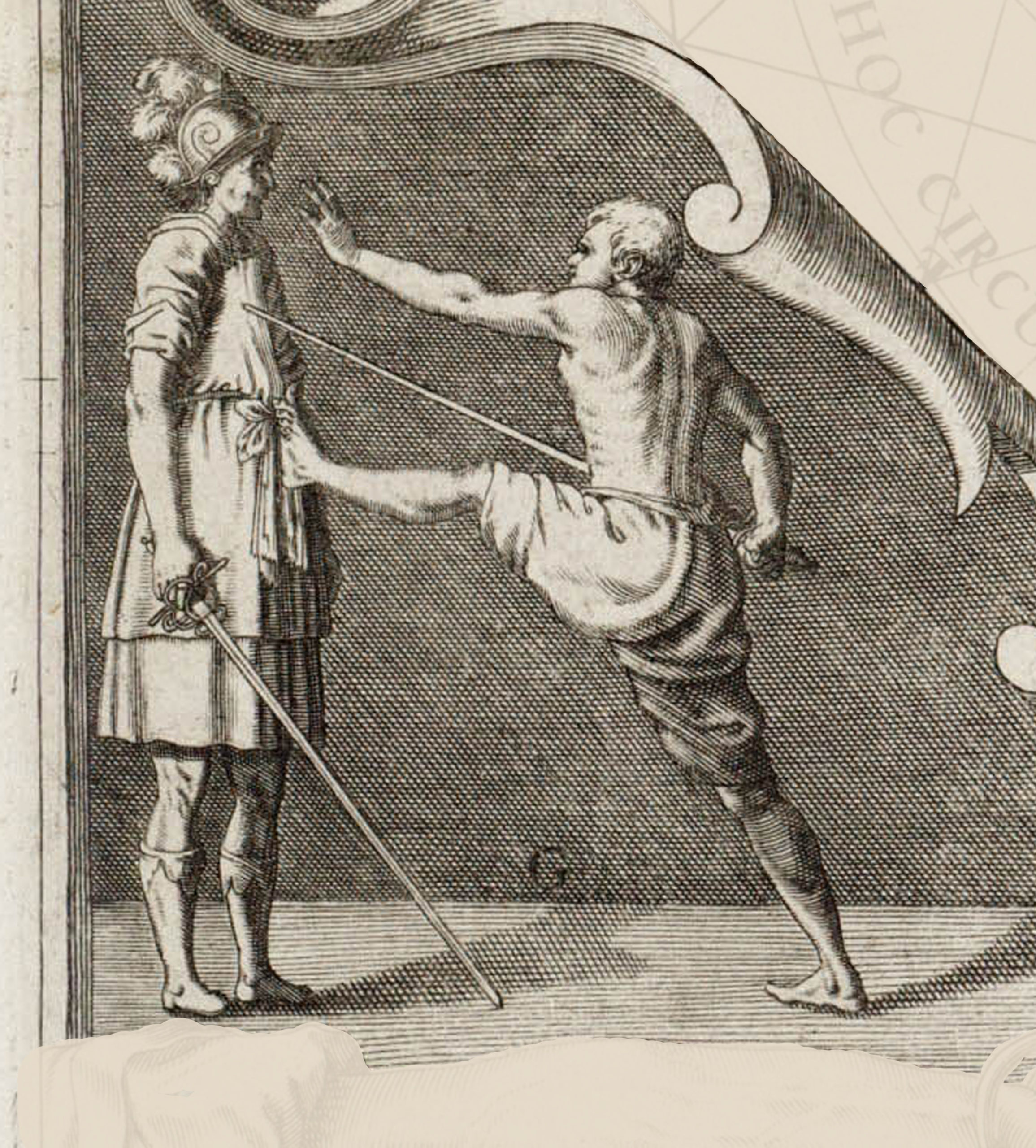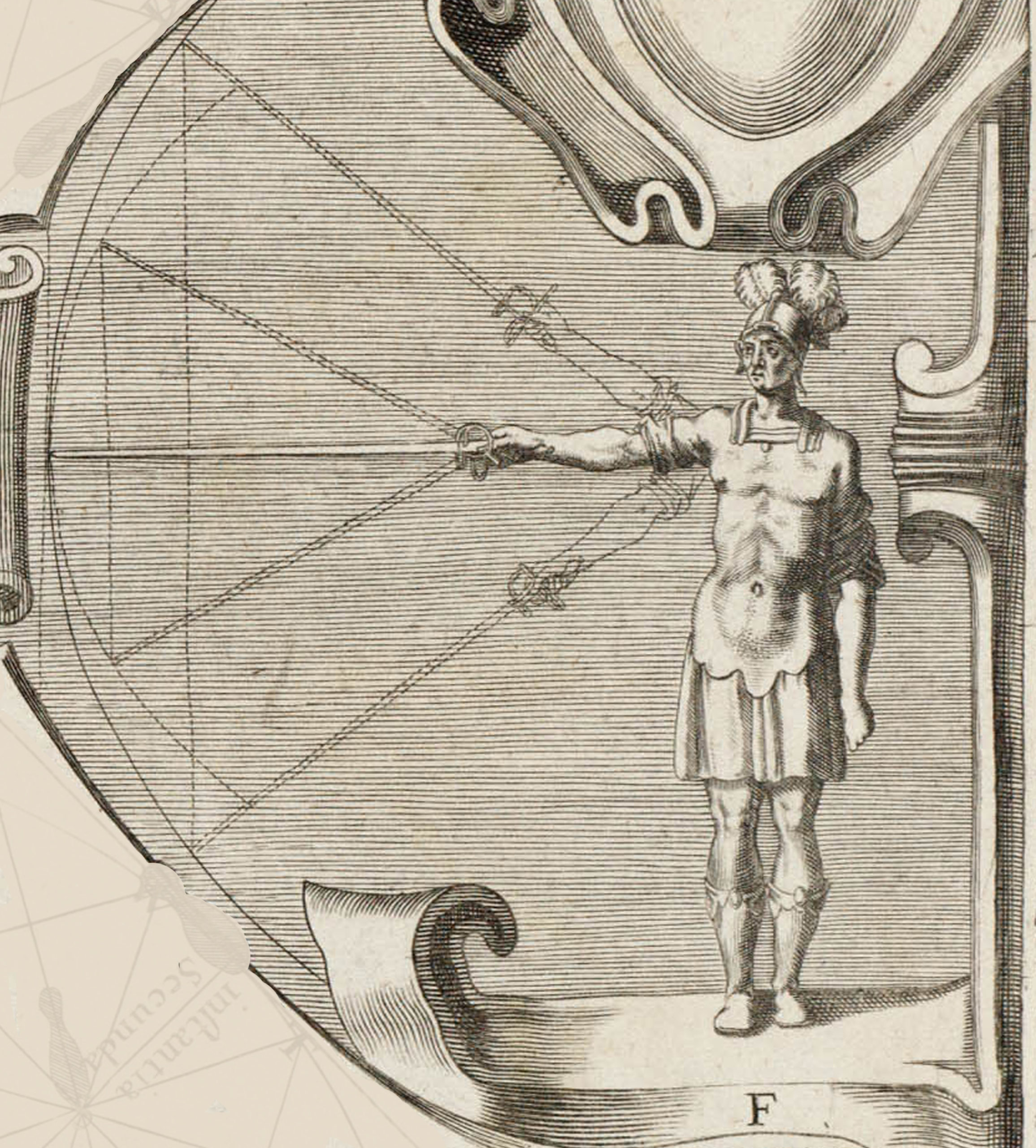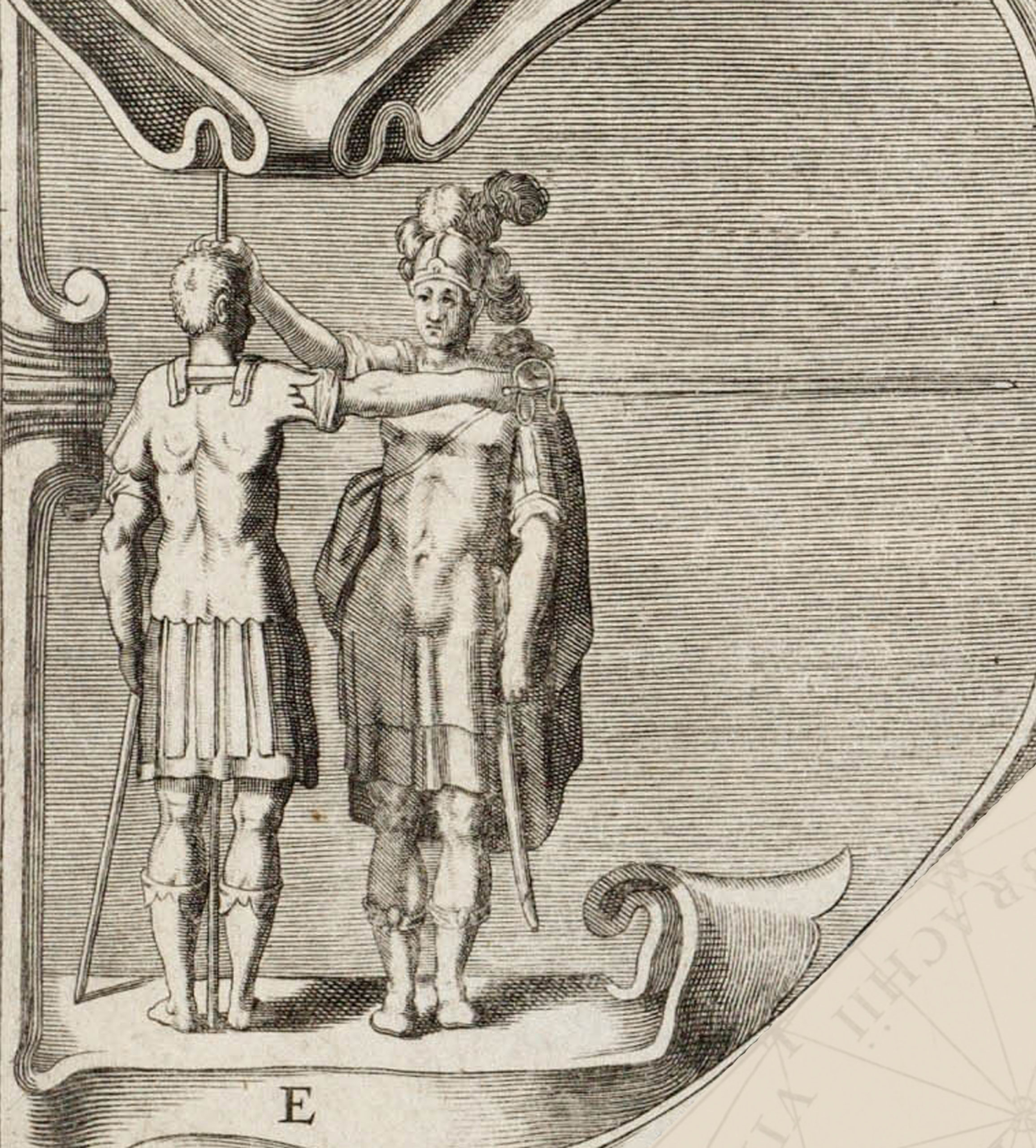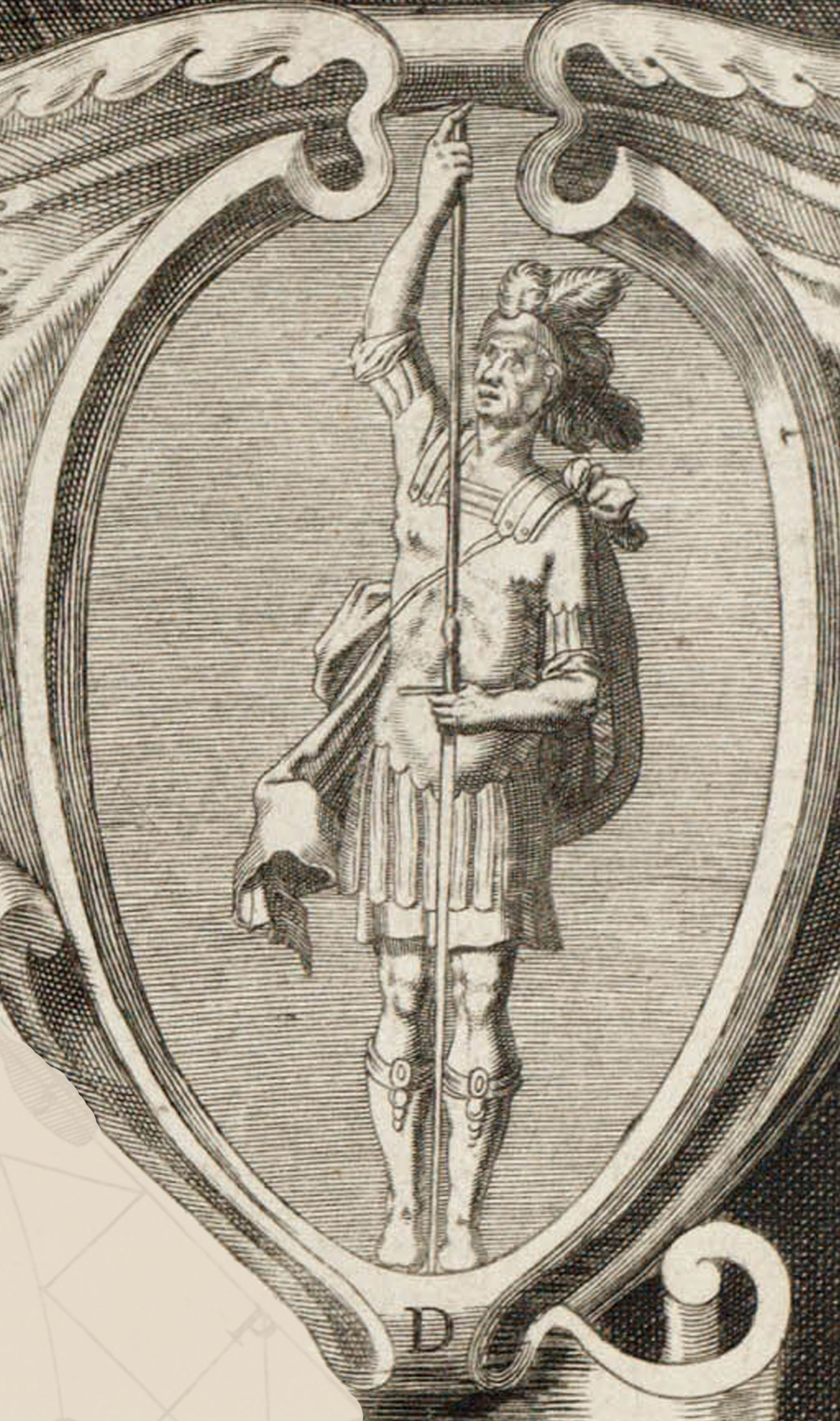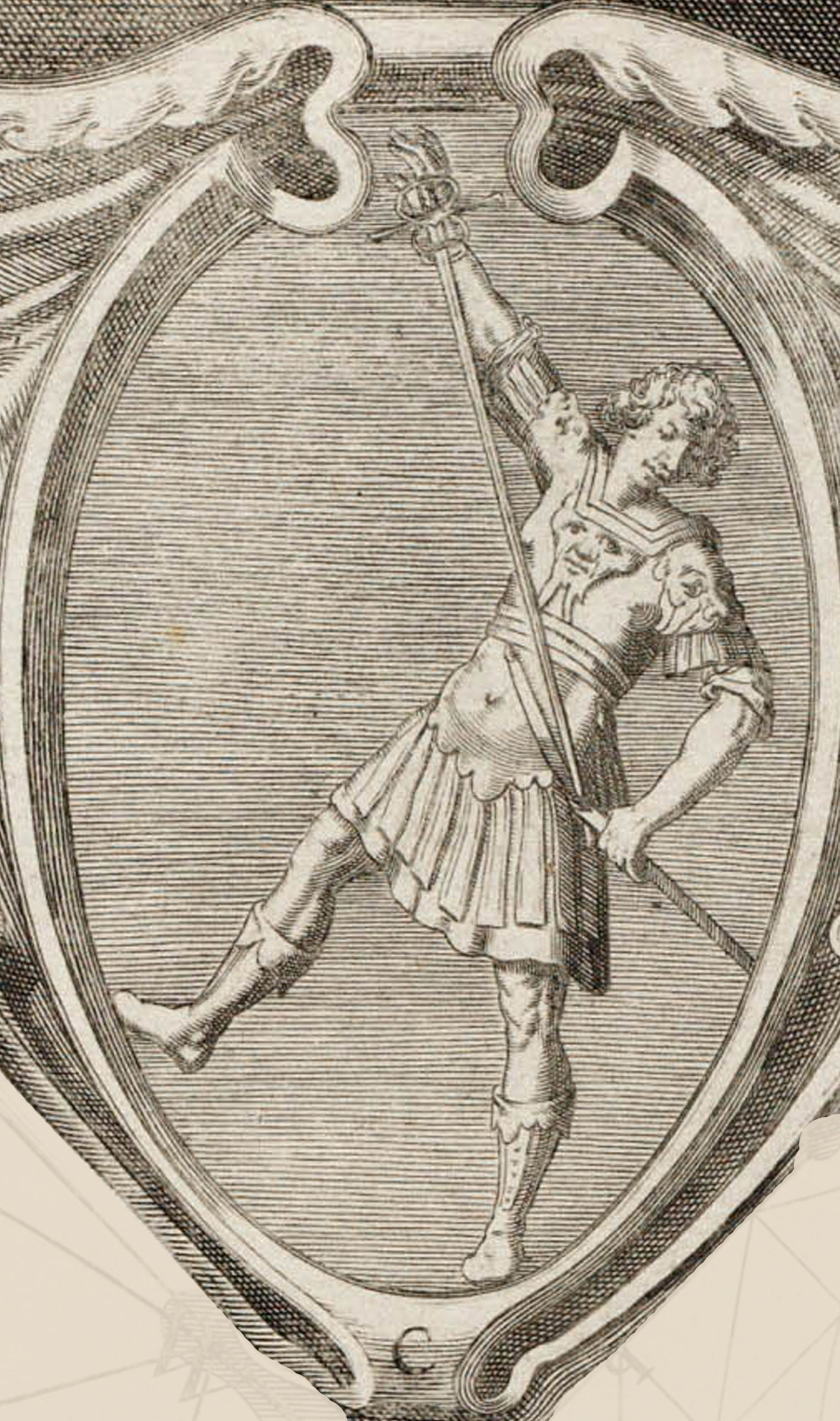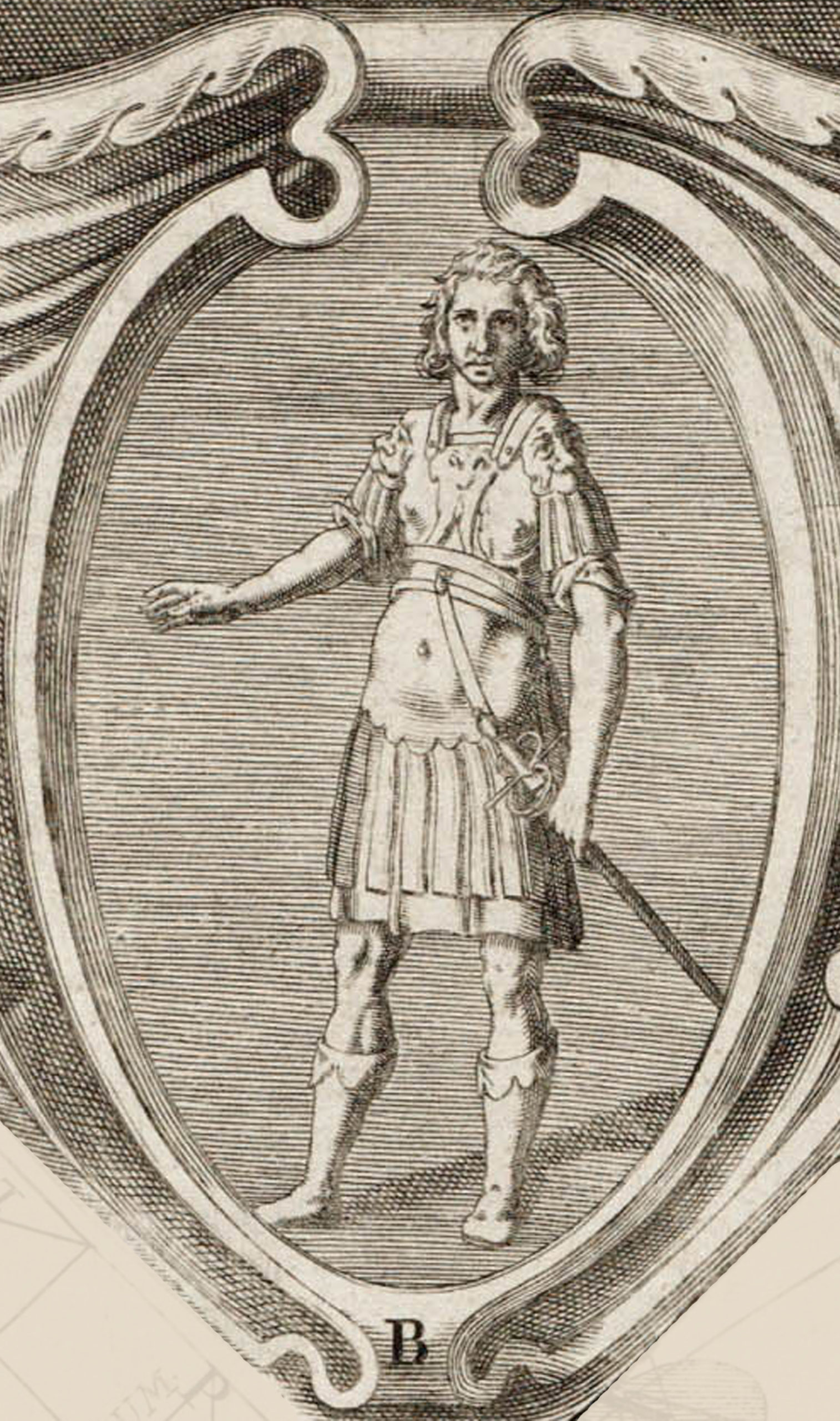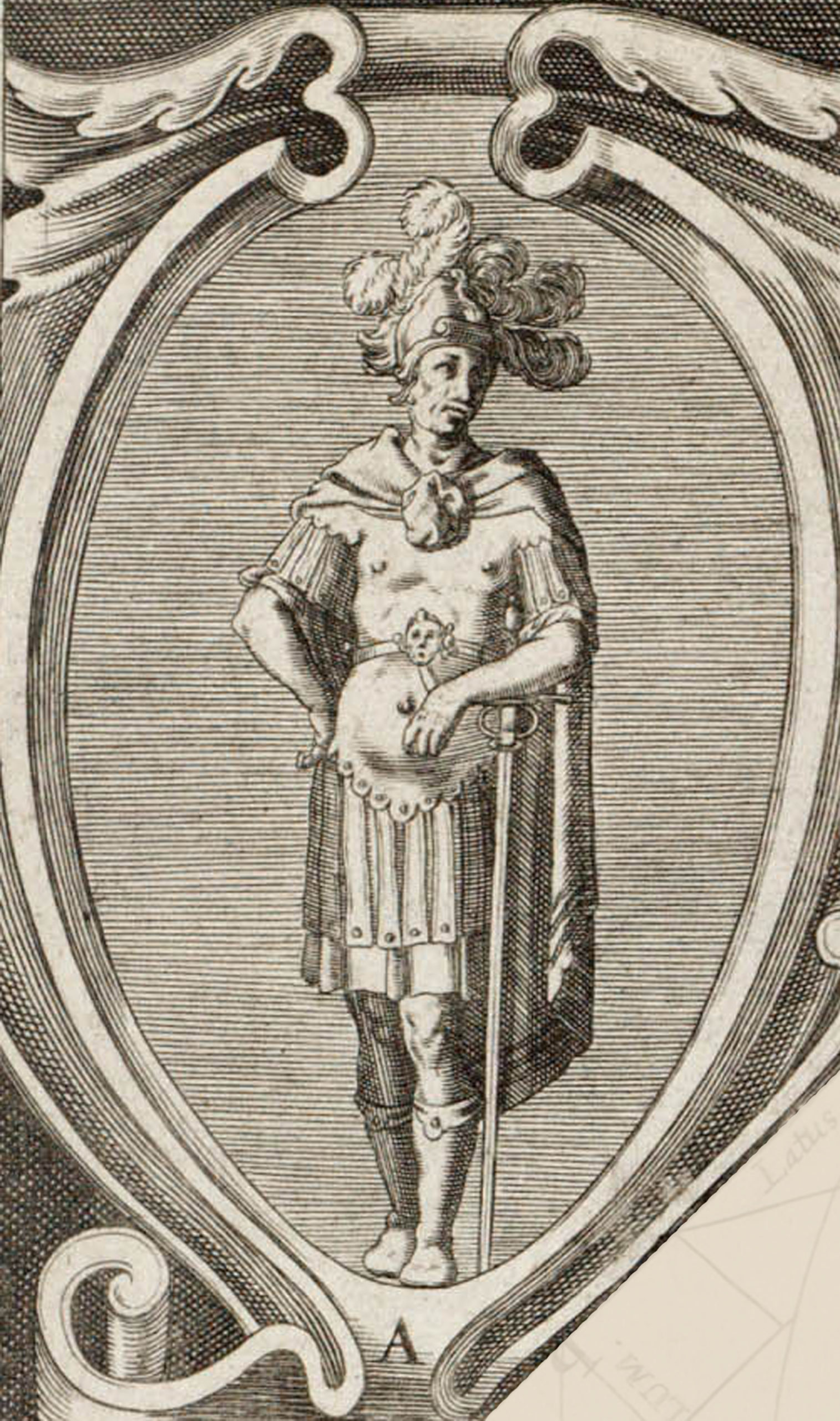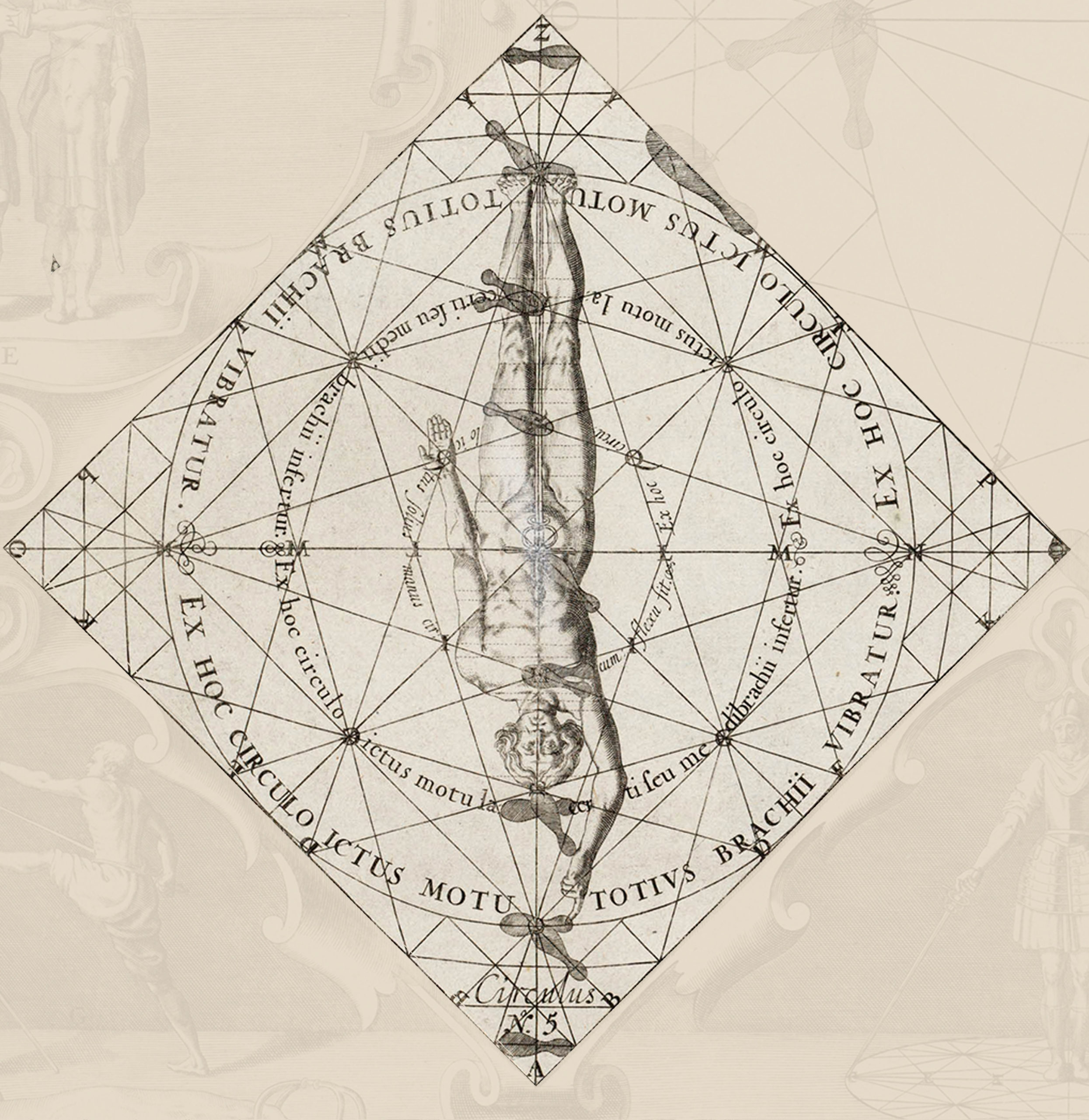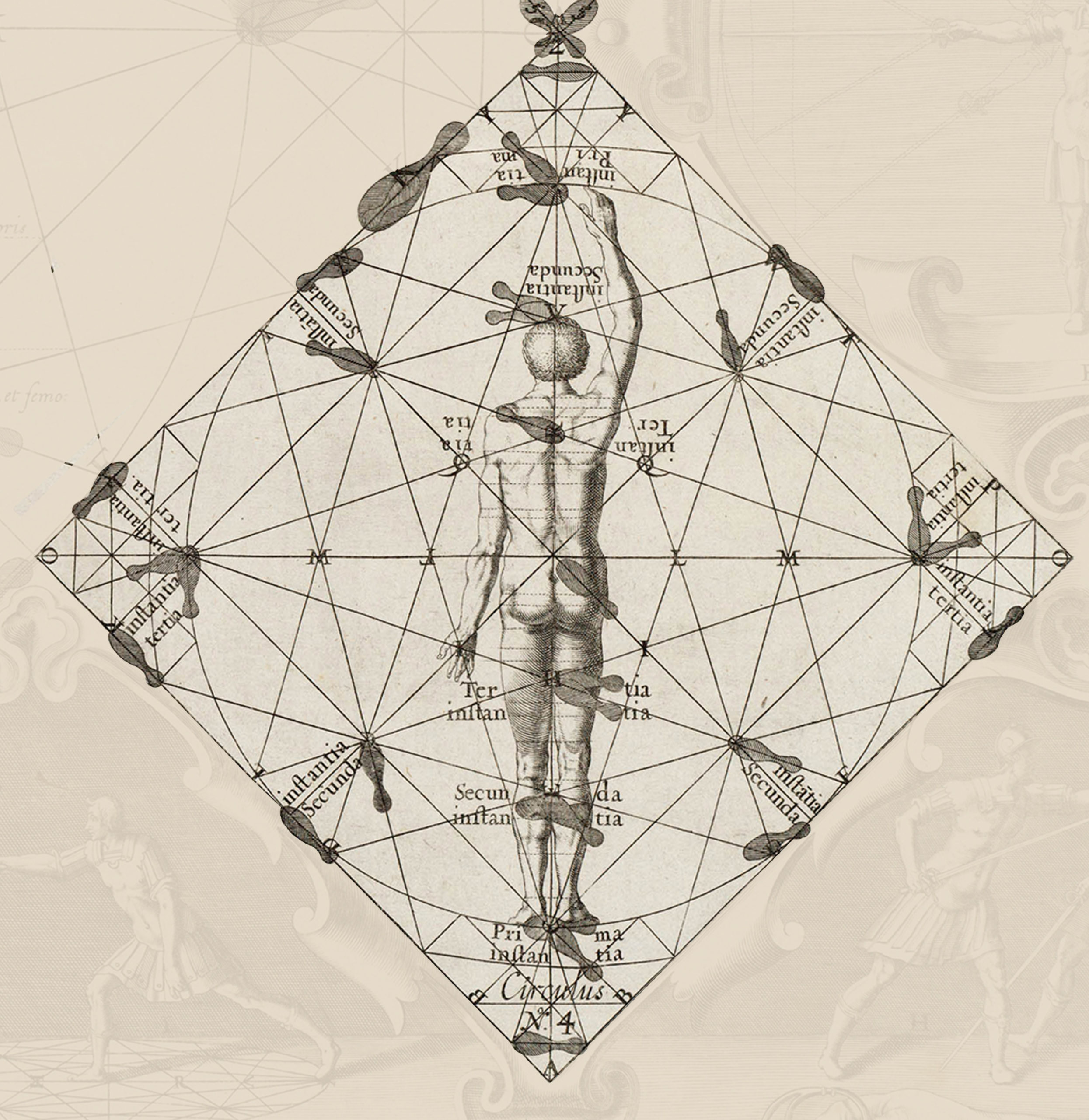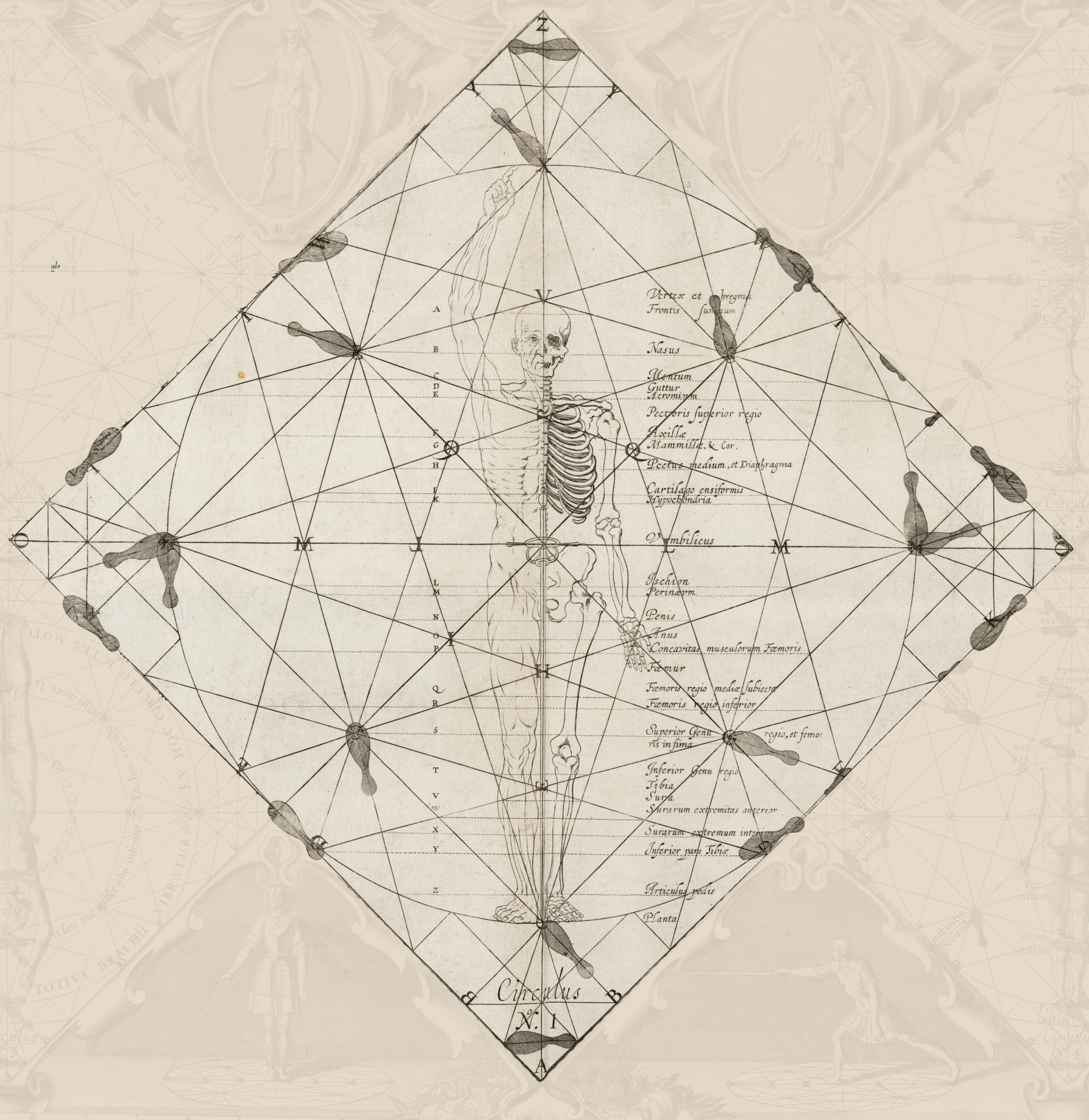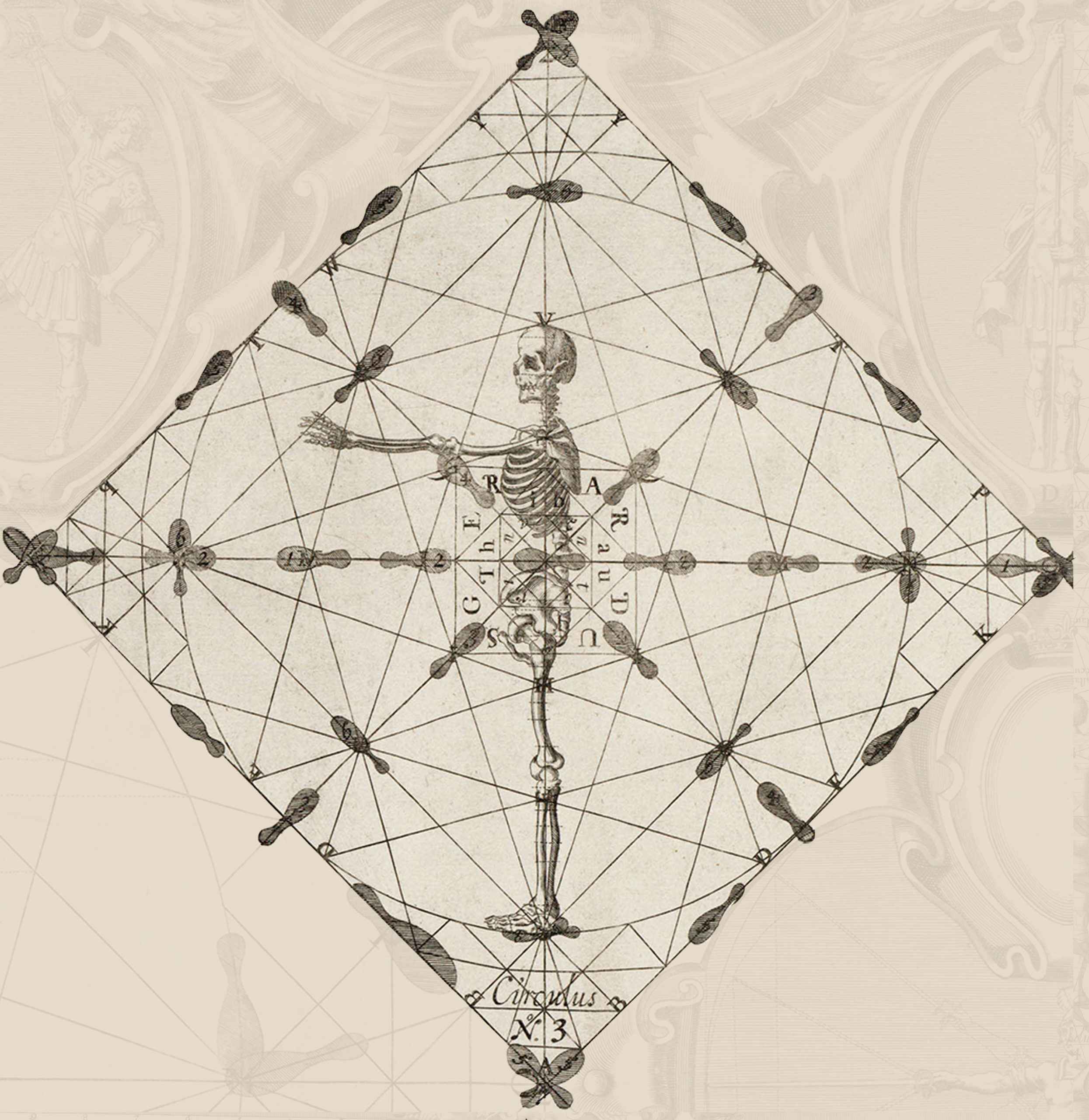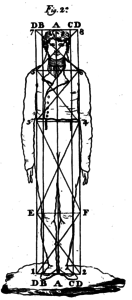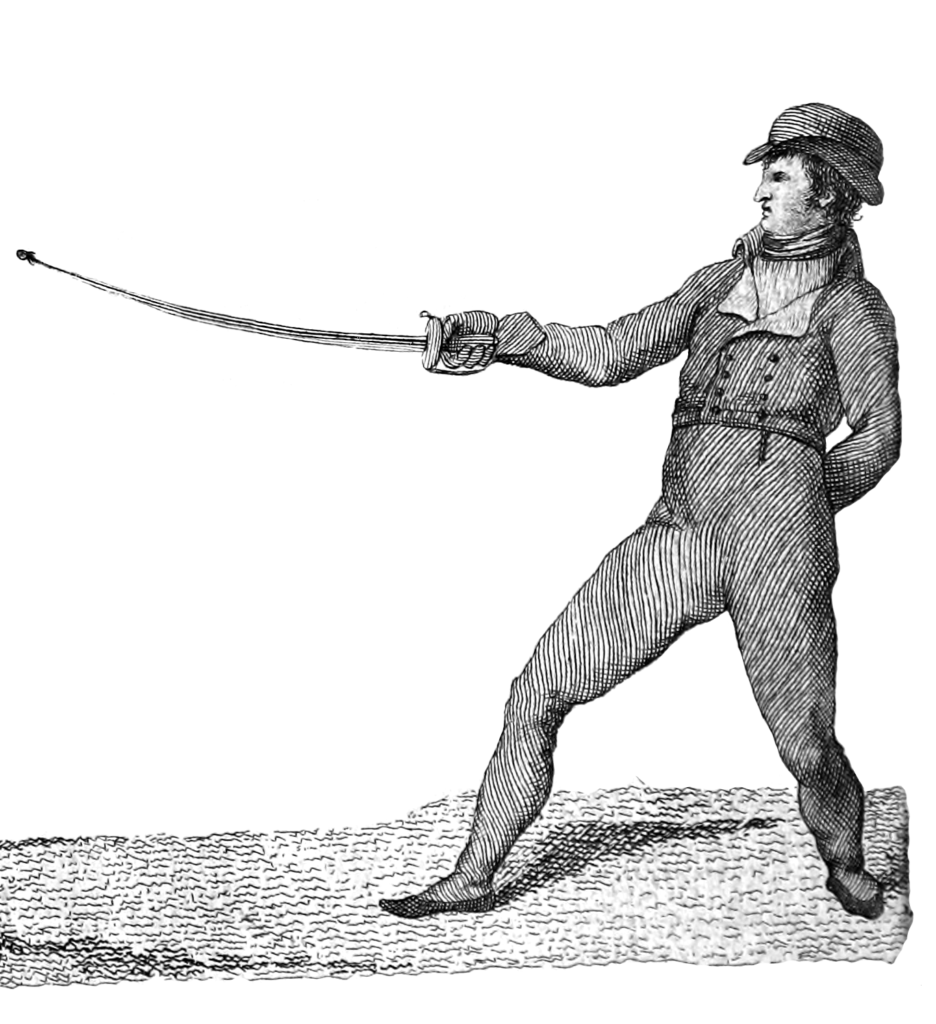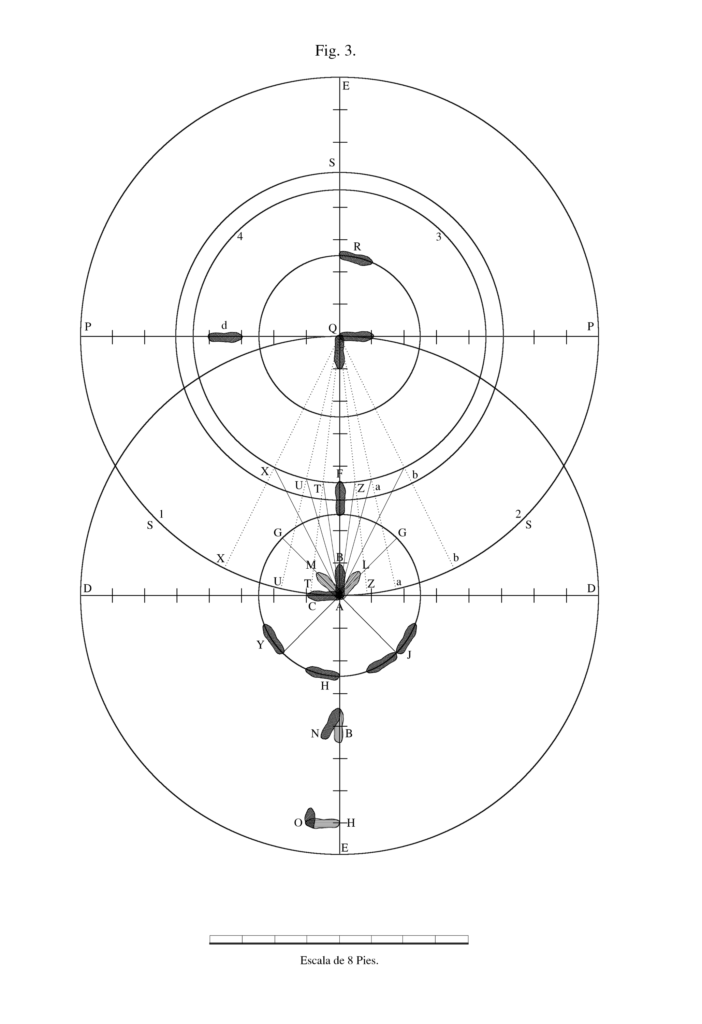
33. Having treated in the previous chapters on the simple steps and some composites, it is necessary to speak of a competitor in order to describe what was previously missed, and of the distance at which that opponent has been placed. There being three to choose from, it is necessary to show them. These are limited to the medios of proporcion, proporcionado, and propinquo, which are the objects of the subsequent paragraphs.
Going forward, I will be translating these uses of the medio, generally as measure. Medio de Proporcion should be understood to be equivalent to the phrase “Defensive Measure” or “Measure of Common Defense” based on Frias’ description in paragraph 34. Likewise, Medio Proportionado will generally be translated as “Offensive Measure,” or a variant of “Striking Measure” based on the descriptions in paragraph 37, and Medio Propinquo will be translated fairly literally as “Near Measure.” I felt it necessary to leave the original Spanish in place in paragraph 33, partially to contrast Frias’ use of the medios against the more commonly seen Proporcion, Proporcional, and Proporcionado.
34. In the same Plate 2 is shown an upper circle on the line E-E whose center, Q, is placed eight feet away from A on your own circle (GG,JY), and having an eight foot radius, which must be passed by the combatant. Around this same and tangent to A of your own is a circle that I call the medio de proporcion or common defense, and is indicated with the letters A, P, E, P and the center with Q. There is one like this whose center is on A and passes through the letters D, Q, D, E, also bearing the name of Medio de Proporcion or common defense. This name belongs to all distances where the combatants cannot be hurt.
Applying our unit conversions from Castilian, 8′ becomes 7’3 3/4″ or just under 223cm. Bear in mind that, per paragraph 8, these measurements are proportional to the size of the combatants in question, so a taller person would have a larger circle.
35. Each combatant, placed at any point is in the center of their own circle, but to choose the point in just measure, you must give your competitor eight feet, as is demonstrated in the centers A-Q.
36. You cannot move from this arrangement without making some kind of step. If the one on the center A makes the point F on the right foot with the outstretched leg having stepped forward and, consequently is affirmed in the offensive posture, the contrary must then stand to the rear at Q and B with the left foot in the defensive posture. Since these stances are made without composition of balance, they keep the same distance or defensive measure.
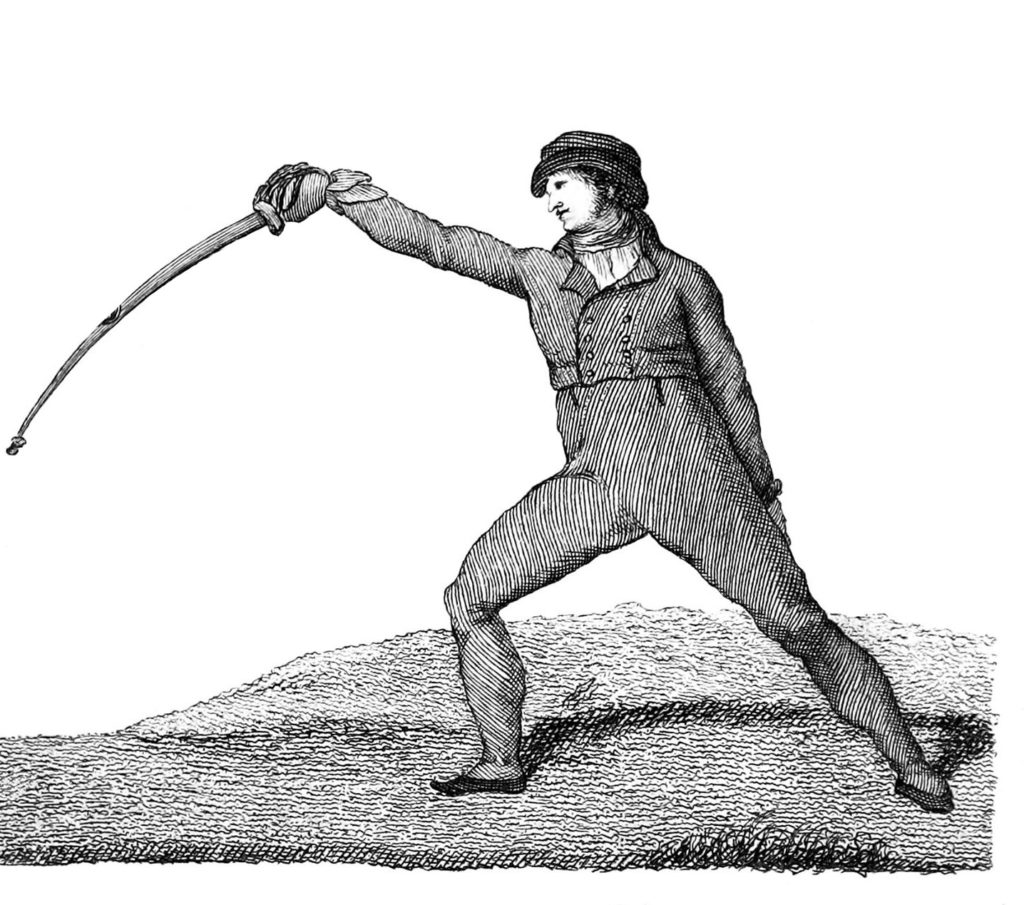
37. Within the circle of defensive measure, P-E-P-A is another called offensive measure, S-S-S. It is so called because it is gives the limit for wounds with the point. It must be touched with the right heel with a deep step to do this. Your radius is only five feet and, consequently, the step that is taken on the line of the diameter will be three feet from the center A. You should not step further except for the cuts and reverses, because, in this case you need to reach the inner circle 1-2-3-4. This step, which we call deep, must always be accompanied by a forward balance and the aptitude of which I spoke when treating of the balances (Plate 4, Figure 6, Letter A).
38. The deep steps are not only made on the line of the diameter, but they admit, and even demand in some cases to turn away from it on the right and on the left, with only one foot or sometimes with two, making much or little balance as will be explained for the benefit of clarity in good order.
39. Step deeply, leaving the line of the diameter on the left side, touching with the heel of the right foot, the point F on the outer circle of the offensive measure, S-S-S. You can omit putting the left foot to point F of the defensive circle P-E-P-A, but if you touch with the right the points U or X of the circles of offensive measure, it is essential that it be accompanied by the left to the corresponding point, and they are indicated by the same letters in the circle of defensive measure, because failing to do so in the last, the body would waiver. All of the steps taken deeply to this on this side should be accompanied, to improve balance, by the motion to square, as explained in paragraph number 29, and those that are made to the right hand side to the points z, a, or b should be accompanied by balancing and the motion of profile, and always following the left foot to the right, keeping both in the direction represented by the lines marked Z, Z, Q, a, a, Q, y, b, b, Q, assuring the full placement of both feet.
40. This only shows the angles which form the steps on the points U-U, etc. It is enough to know that a larger opening is needed than to step along the line of the diameter and, consequently, these steps will exceed the indicated measure the more they separate from the line of the diameter, and the same shall be understood to the other side.
41. Having explained the measures of defense and offense, and the compound steps that are executed from them, I will treat of the near measure that will serve for the conclusions. What I call the near measure is the shortest distance you should put yourself from the other combatant. This consists of four feet, and is chosen, passing through the offensive measure in this manner. step deeply to the points X, X, raise your left foot to put it on the point d of the tangent P-P, doing that, follow immediately with the right to the point e on the same line. This method of passing on the tangent is called in two times, counting with the suspension of the left foot on the point X, a distinction from another called one time which is done in this way: having stepped with the right foot to point X of the offensive circle, without passing the left to the corresponding X of the defensive circle, make yourself walk from point C to d of the tangent, following closely behind the right immediately to the e of the same.
42. Make use of this distance to disarm or injure the enemy in safety, staying firm in the line, walking on it, or going out and going on the left side as I have said, and I will say more at length in part seven of this treatise.

